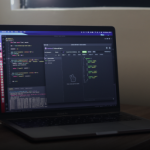The software development life cycle (SDLC), at its core, is just a set of steps meant to help teams create quality software most efficiently and cost-effectively as possible. It takes its inspiration from assembly line processes.
The concept originated in the 1960s as software development became more complex and requirements more complicated. Businesses needed a way to standardize and organize software development and utilize a more tactical plan of attack.
You can argue that every step of the SDLC is the most important one. But each needs the appropriate amount of time, attention, and resources to realize the project successfully. That’s why we will explore the design phase in depth to see its objectives, who’s involved, and what it should deliver.
Overview of the Software Development Life Cycle
SDLC isn’t a specific set of steps; it’s an umbrella term encompassing many methodologies, such as Agile and Waterfall. But it does have typical phases that each method approaches and interprets in its own way. This means some repeat these steps as cycles within the development phase or do them in a different order.
Since we’ll be going into depth on the design phase, this is a brief overview of the other phases to contextualize it.
Phase 1: Planning/Requirement Analysis
Before embarking on software creation, it’s critical to take the time to note all of the boxes your software needs to tick. This generally involves communicating in depth with the client to ensure you’re both on the same page or assessing the needs of your audience through surveys and research.
It also means doing a cost-benefit analysis and other budgetary planning steps so you can make more accurate projections.
After that, your team needs to make a comprehensive plan of attack. This can be revised during the process as unexpected complications arise, but you need to have a game plan, so everyone knows their goalposts.
This process ends in creating a software requirement specification (SRS) document that unifies all the product requirements.
Phase 2: Design
From the planning stage, the next step is designing the software. We’ll go more in-depth into the design phase in the next section. First, as an overview, the design phase involves creating a document that outlines the architecture, UI, technical restrictions, and the desired features of the software.
Phase 3: Coding and Implementation
During phase 3, the actual coding begins. This is where the bulk of the work happens, as all the planning and designing turns into a realized product. This involves breaking down the larger objectives into smaller, daily tasks to realize the product on schedule.
Phase 4: Testing
While testing ideally happens during the coding phase as well, the testing phase is where debugging and error checking begin in earnest. It’s also when the software is tested for usability to ensure it meets user needs.
This is generally done through a combination of manual and automatic testing.
Phase 5: Deployment
Deploying the software generally is a multi-step process, depending on the timeline and strategy for release. Initial releases are done as beta testing or within limited audience segments. Ideally, this is the phase when the last bugs are identified and fixed.
Phase 6: Maintenance
Software isn’t a one-and-done thing. Release day is just the beginning for most software, especially with the rise of software as a service (SaaS). In addition, most software goes through continual updates and improvements after its official release. That’s why maintenance is its own phase; depending on the software, it can be the longest.
The Design Phase
The design phase has several steps and components. In this phase, the data, information, and requirement gathered in the planning stage are condensed into an actual implementation plan.
This plan should include all the details of the next steps of the development cycle, including development, testing, and release.
This consolidation of requirements is why the design phase is so imperative. While the initial planning stage gives you a general idea of what you need to accomplish, the design phase is when that is turned into actionable tasks.
It also ensures that any stakeholders know exactly what they’re getting, and there won’t be any misunderstandings discovered when it’s too late.
What parts of the team are involved in the design phase
The design phase isn’t self-contained within a specific team. Design is always a collaborative experience in software development since it can never be done in a vacuum. All design needs to accommodate technical constraints, the needs of clients and stakeholders, as well as factor in the unique team creating it.
Generally, the client is heavily involved in the planning and design phases to ensure their interests are appropriately catered to. Therefore, they need to be able to voice any questions or concerns.
Both front and back-end developers should also be a part of the conversation. Both sides need to know how they will collaborate and their specific goals.
The design phases’ deliverables
While the goal is a unified document that details the process from beginning to end, the documents should contain all or most of these deliverables:
- System Design Document
- System Security Consensus Document (SSCD)
- Data Retention Plan
- Disaster Recovery Plan
- Unit and Integration Test Plans
- Implementation Plan
- Training Plan
Depending on the specifications of your software, you may need to mix and match the deliverables and invest more time and energy into different parts.
Set Yourself Up for Success
Software development is a complex, multi-step process with many moving parts. The software development life cycle helps keep it on track and enables you to create the best product for the least time, money, and headaches. And the design phase is critical to that process. Therefore, giving the design phase enough time and attention is imperative to set software development up for success.
If you’re developing software or want to begin development, Confianz can help. We partner with businesses to help them create the best possible product. We specialize in creating custom software applications tailored to your specific business needs. Whether you require web or mobile application development, we’re here to assist your organization. Our team of experts has extensive experience in developing custom ERP software (Odoo ERP/Acumatica Cloud ERP), mobile, and web applications for a wide range of industries.
If you’re seeking to hire a developer in the USA or India for your passion project, search no further than Confianz! We offer dedicated developers for hire to assist you in making your dream project a reality. So call us today to get started!




